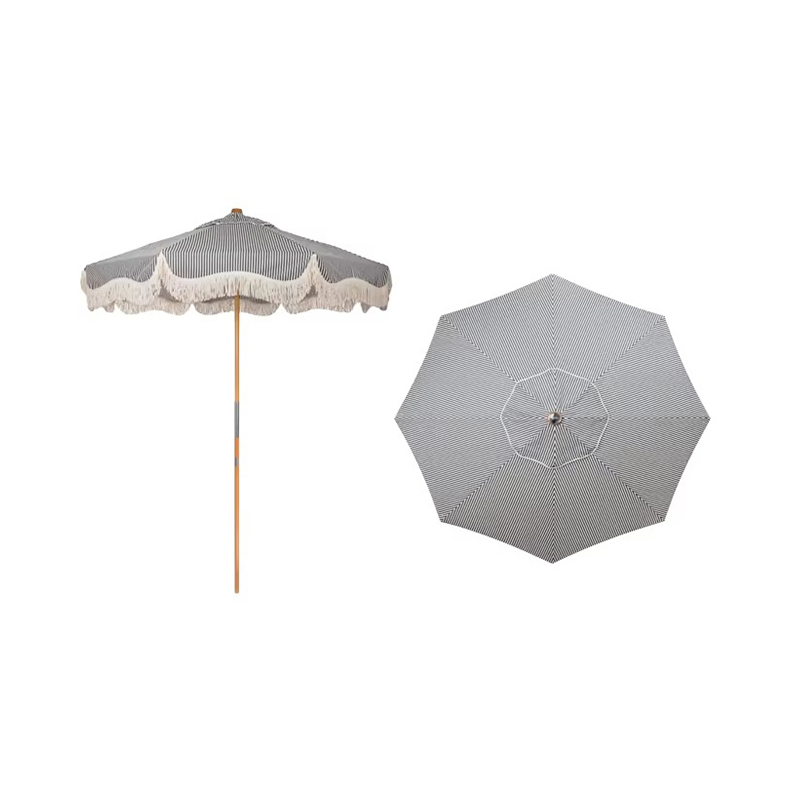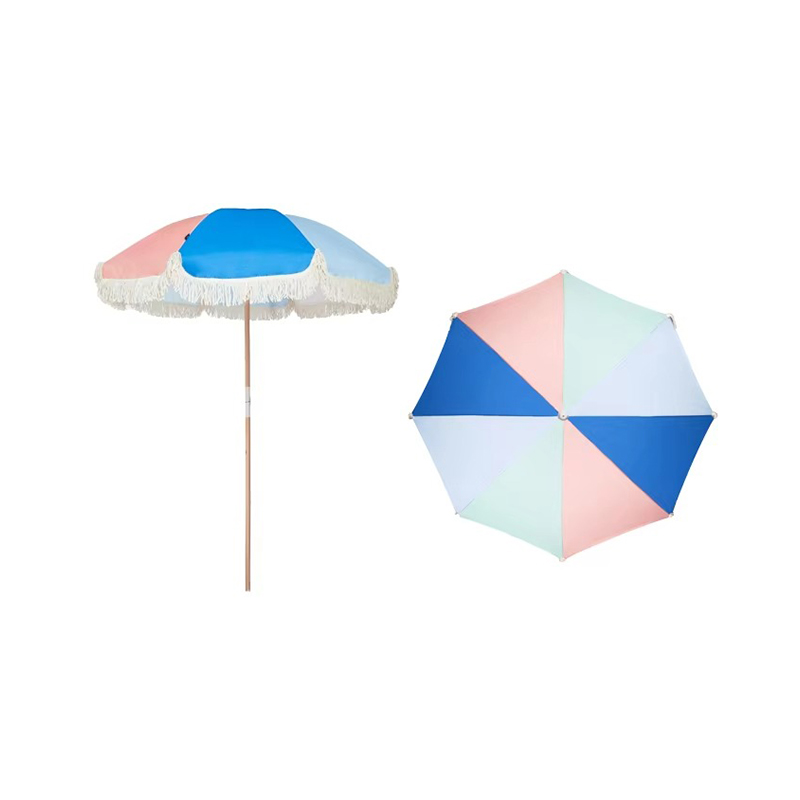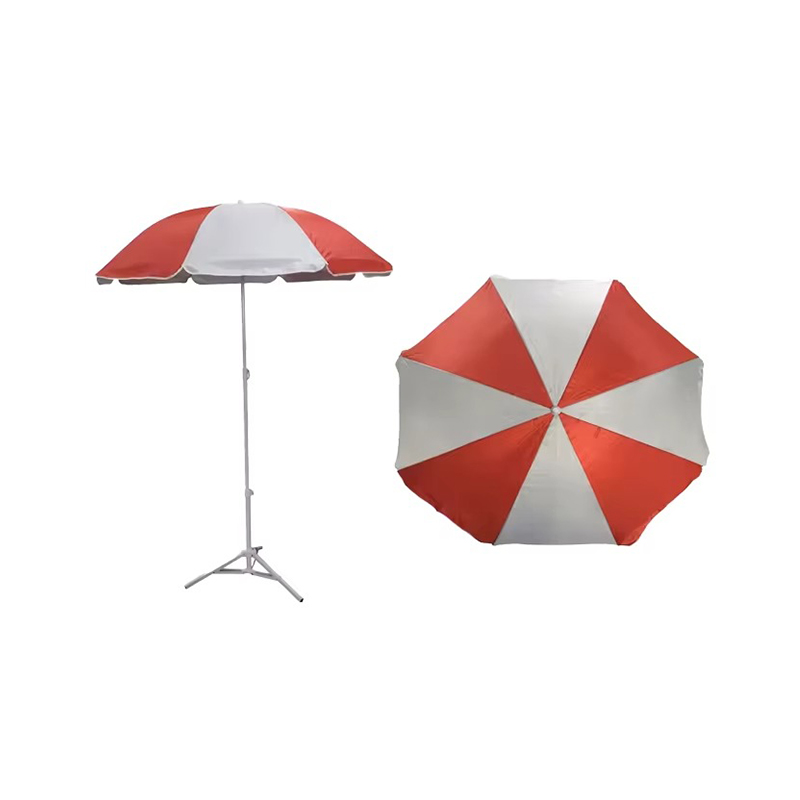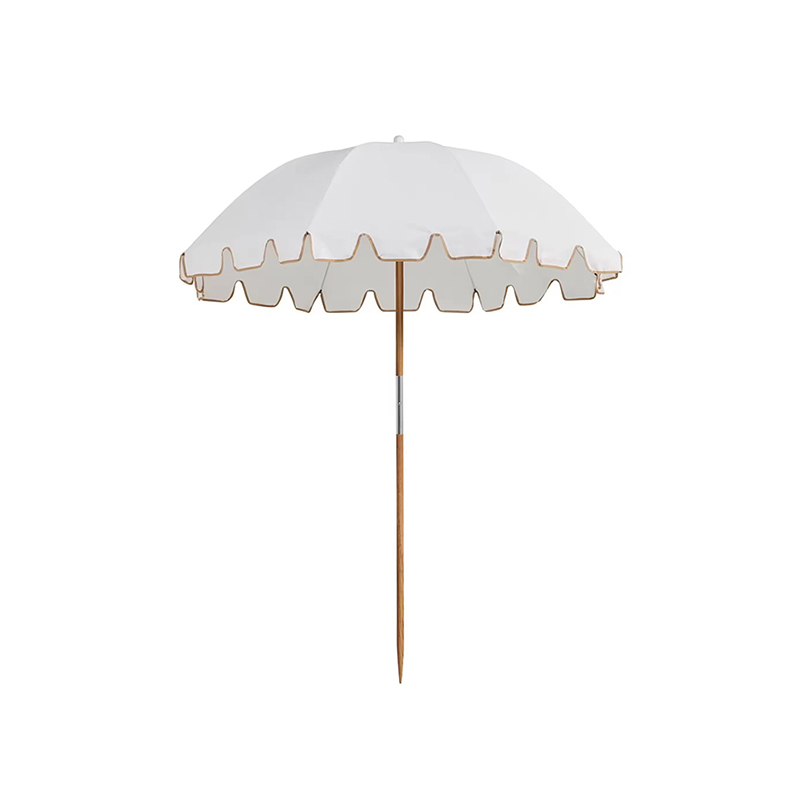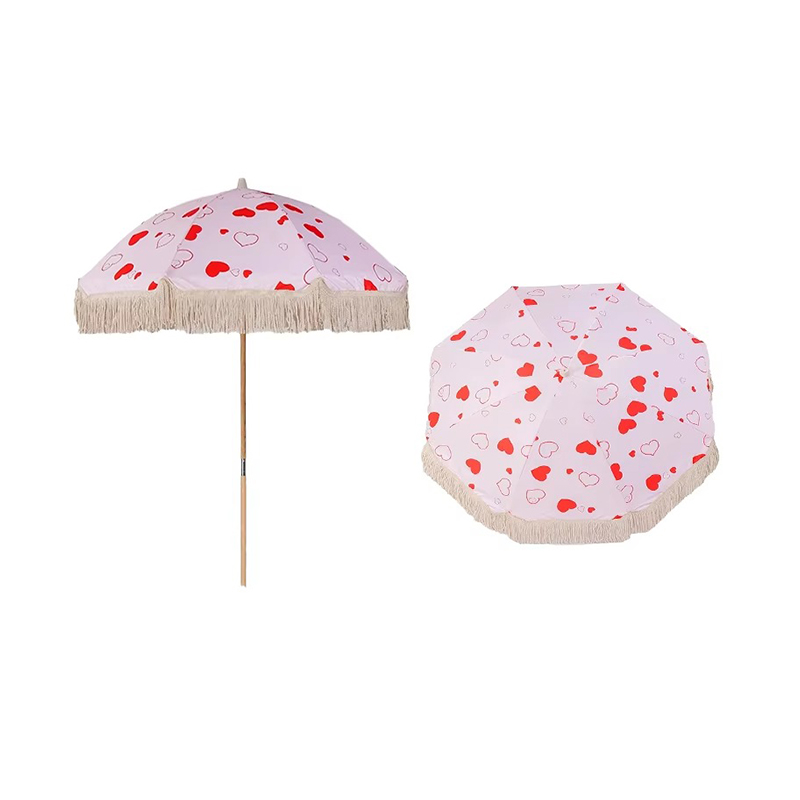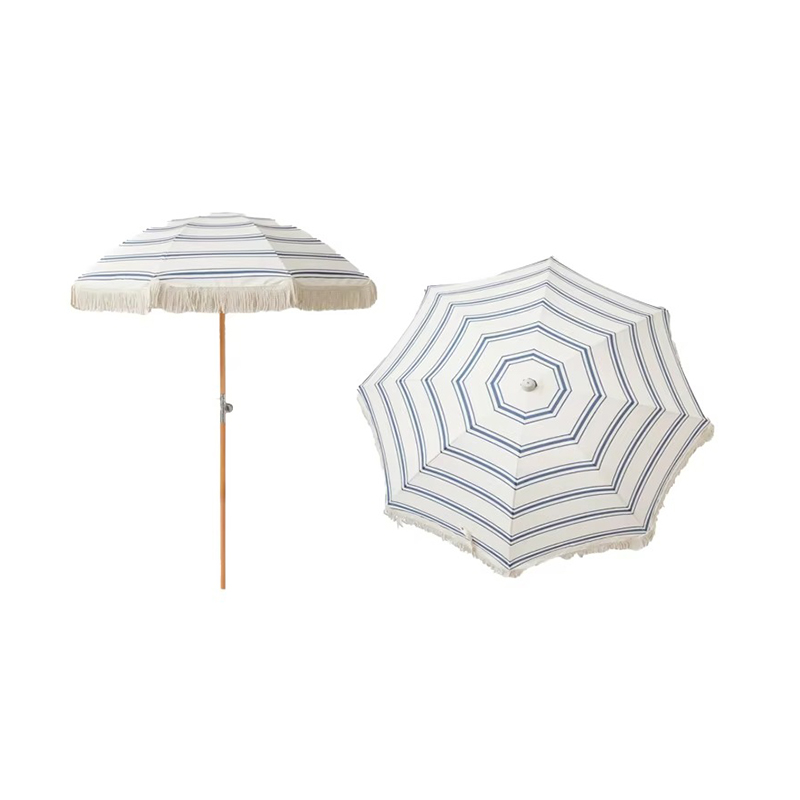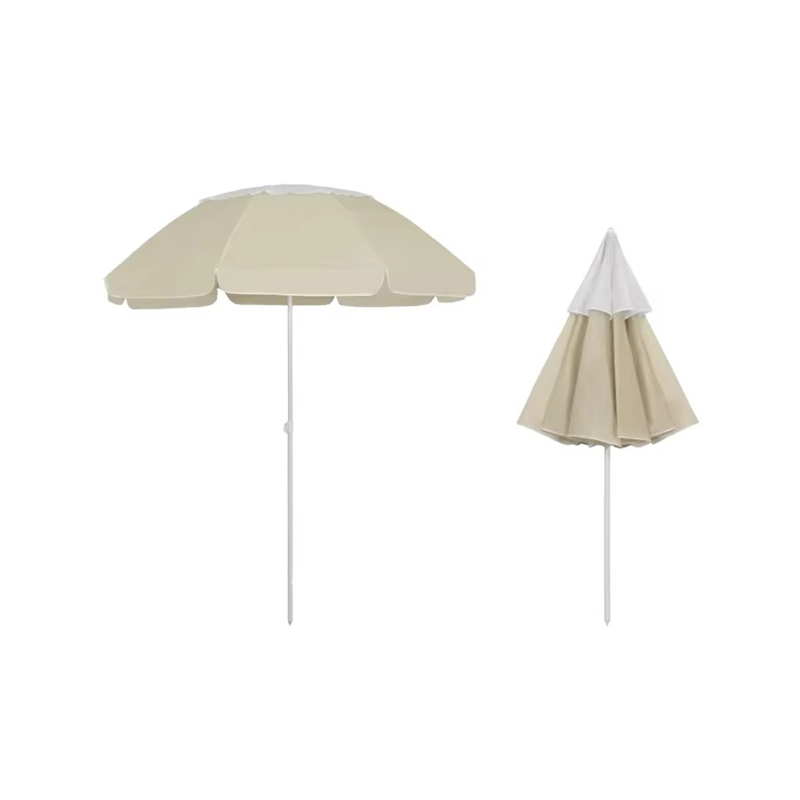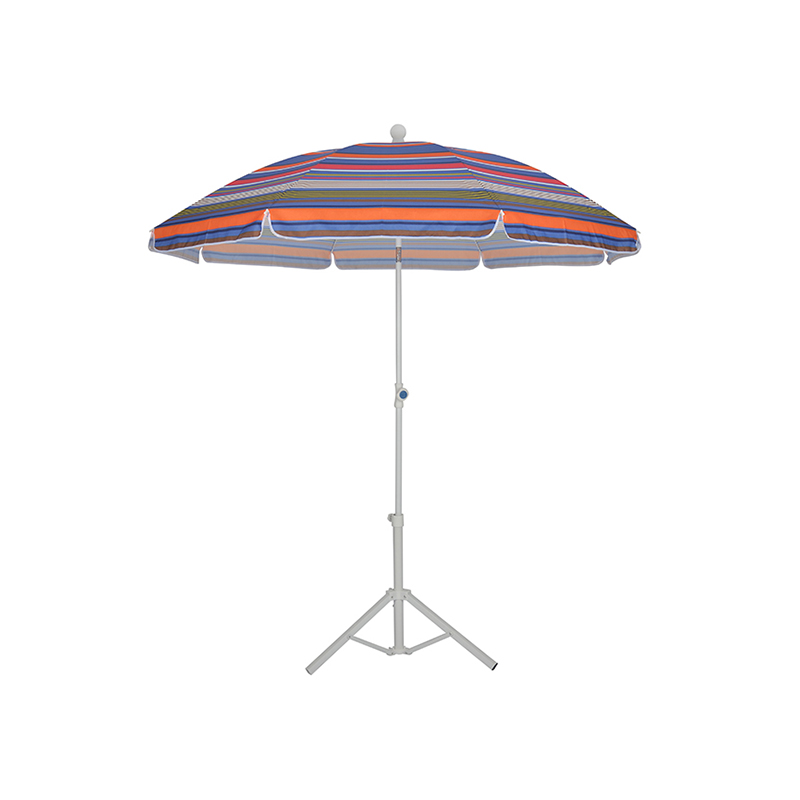What is the best color for a beach umbrella?
Posted by Admin
Choosing the best beach umbrella color involves balancing practical function and personal context:
**1. Heat & UV Reflection: Dark vs. Light
Deep tones (Navy/Black): Absorb more heat but block UV rays more effectively – ideal for intense sun exposure. Trade-off: Shade area feels noticeably warmer, though safer for sensitive skin.
Pale shades (White/Sky Blue): Reflect heat, keeping the shaded area cooler. Trade-off: May allow more UV penetration (especially if fabric is thin).
**2. Visibility & Safety
High-Vis Colors (Orange/Yellow/Red): Critical for group gatherings – acts as a beacon on crowded beaches. Reduces "Where's our spot?" panic. Use case: Families with kids running between umbrellas; busy public beaches.
Low-Key Hues (Beige/Green): Blends with nature for tranquil aesthetics but risks being overlooked. Avoid if prone to losing your spot.
**3. Psychological Impact
Cool Blues/Greens: Create calming, "ocean breeze" ambiance – suppresses heat-induced irritability.
Warm Reds/Yellows: Energizes social spaces – suits lively groups but may visually intensify heat.
Avoid All-Black: Can feel oppressive during long hours under the sun; opt for patterns if needing dark UV protection.
**4. Practical Compromises
Two-Tone Designs: Best of both worlds – e.g., navy exterior (UV blocking) + white interior (light-reflecting).
Silver-Coated Canopies: Reflects UV rays efficiently but creates glare. Use only away from others to avoid light annoyance.
Patterns over Solids: Multicolor stripes/camo better disguise sand stains, sunscreen smears, and fading.
**5. When Color Doesn't Matter
Short-term use (under 1 hour): Pick any shade – UV exposure remains minimal.
Full coverage setups: If attaching side flaps or pairing with a tent, focus on fabric quality over color.
Windy spots: Anchor strength outweighs color – a gray umbrella that stays put beats a red one in the sea.



